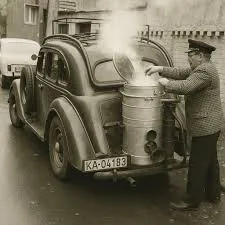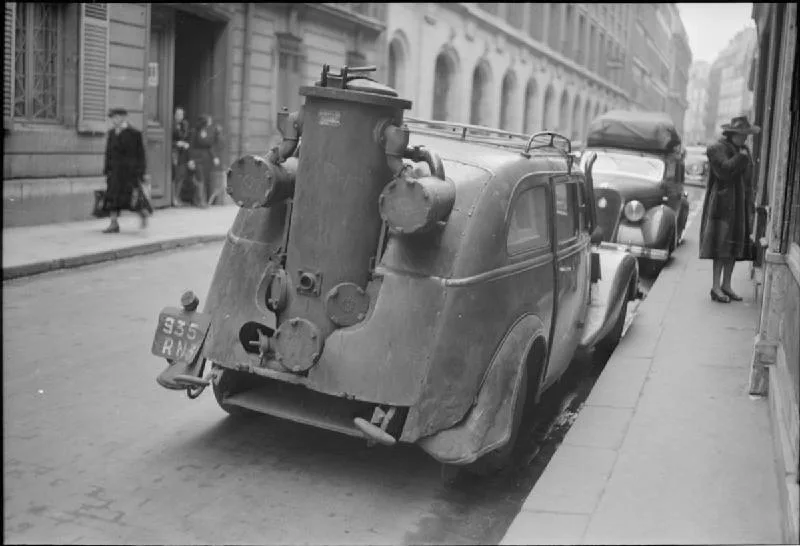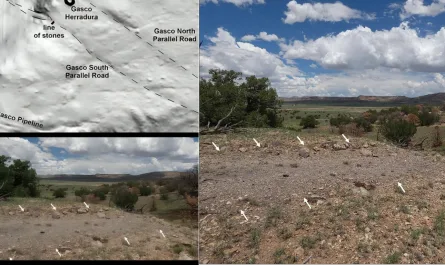A Glimpse into the 1940s: Powering Cars with Firewood
During the 1940s, amidst the turmoil of World War II, fuel shortages and rationing forced societies to innovate. One remarkable solution was the use of wood gas vehicles, where firewood or charcoal powered cars, trucks, and buses. This fascinating chapter of automotive history showcases human ingenuity in the face of scarcity, with a man fueling a car with firewood becoming a striking image of the era.

The Wood Gas Revolution
Wood gas vehicles operated using a wood gas generator, a device that converted wood or charcoal into a combustible gas through a process called gasification. This involved heating biomass to high temperatures (over 700°C) in a low-oxygen environment, producing a mixture of gases including nitrogen, carbon monoxide, hydrogen, and traces of others. This “wood gas” could then power an internal combustion engine, offering a viable alternative to scarce gasoline.

The system was clunky but effective. A wood gas generator, typically mounted on the back or side of a vehicle, consisted of a firebox where wood was burned, a filtration system to clean the gas of tar and ash, and pipes to deliver the gas to the engine. Drivers often carried sacks of firewood or charcoal for refueling, a task as routine as filling a gas tank today but far more labor-intensive.
A Wartime Necessity
Wood gas vehicles became widespread during World War II, particularly in Europe, where fuel rationing was severe. Germany led the way, with several million wood gas-powered vehicles on the roads by the 1940s, including trucks, buses, and private cars. Countries like Sweden, France, and Finland also adopted the technology, adapting vehicles to keep economies and militaries moving. In Germany, the need for self-sufficiency under wartime restrictions drove innovation, with companies like Opel and Mercedes-Benz producing wood gas conversion kits.

The image of a man loading firewood into a vehicle’s generator captures the era’s resourcefulness. Drivers had to be mechanics and fire-tenders, stoking the generator and monitoring gas production while on the road. A typical journey might require stopping to refill the firebox with wood every 50-100 miles, depending on the vehicle and load.
Challenges and Trade-Offs
While wood gas vehicles were a lifeline, they weren’t without drawbacks. The generators were bulky, adding weight and reducing cargo space. The gas had lower energy density than gasoline, resulting in reduced power and top speeds often limited to 30-50 mph. Starting the system could take 10-20 minutes, as the fire needed time to produce sufficient gas. Additionally, the risk of carbon monoxide poisoning was a serious concern, requiring careful handling and ventilation.

Despite these challenges, wood gas vehicles were a testament to adaptability. They allowed civilians and militaries to maintain mobility when traditional fuels were scarce, using a renewable resource—wood—that was often locally sourced.

A Forgotten Innovation
By the end of the war, as gasoline became more available, wood gas vehicles faded into obscurity. The technology was largely abandoned in favor of more convenient fossil fuels, but it left a lasting legacy. Today, with growing interest in sustainable energy, wood gas systems are occasionally revisited by enthusiasts and researchers exploring biomass-based fuels.
The image of a 1940s driver fueling a car with firewood is more than a historical curiosity—it’s a reminder of how necessity drives innovation. In a time of crisis, people turned to the forests to keep their engines running, proving that even the simplest resources could power a nation.





